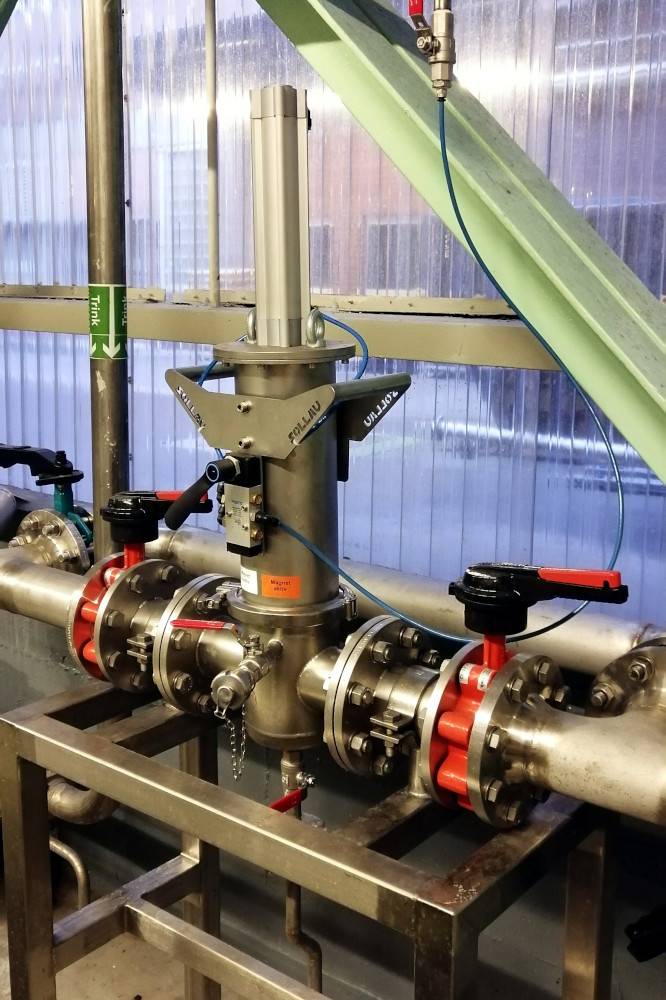11. 1. 2024
How to remove ferrous metals from fermented biomass? (case study)

Initial status
Our customer specializes in the production of fermented biomass. In production, they faced a problem with the presence of small ferrous particles (particularly wear dust from the piping) in the liquid biomass.
What is fermented biomass?
It is organic material that has undergone fermentation, a biological process in which microorganisms (often bacteria or yeast) metabolize organic material - such as plant residues, food waste or other organic materials. This process breaks down organic material into simpler compounds that are used for several purposes in the
- Biogas production
- Fertilizer production
- Food processing industry
- Biotechnology
Overall speaking, fermented biomass is a valuable resource of raw materials and energy. It has many uses and contributes to the sustainable management of organic materials.
Problem
During the pumping of the fermented biomass, small ferrous particles (= wear dust) were getting into the processed material. These particles increased the risk of damage to the technology and reduced the quality of the biomass – which negatively affected also the final product. An effective solution was needed to remove these iron contaminants.
Solution
The fermented biomass is transported through an 80 mm diameter pipe. We recommended that the customer uses the magnetic filter MSP-SC 80 N ORCA, which is easy to install into the pipeline. This separator is equipped with strong neodymium NdFeB magnets with an induction of up to 18700 G. It has been designed for separating ferromagnetic particles from a stream of liquid material. The magnetic rods of the separator are in intensive contact with the flowing material and can capture even very small ferrous particles without blocking the biomass flow.
Another customer requirement was simple, fast, and safe cleaning of the magnetic separator. That was why we recommended the magnetic separator MSP-SC ORCA with semi-automatic cleaning.
The main advantage of this separator type is that it is not necessary to take the separator body out of the pipeline during cleaning. Thanks to the pneumatically operated piston, the handling of magnetic cores is considerably facilitated (this is particularly important in case of larger magnetic separators as well as if the processed material is heavily contaminated with ferromagnetic particles).
Benefits of using the magnetic filter MSP-SC N 80 ORCA:
The magnetic filter separated fine ferrous metals - tens of grams of even very small ferromagnetic particles were captured during each of the individually set cleaning cycles. This met the customer's expectations.
The use of the magnetic filter MSP-SC N 80 ORCA had the following positive consequences:
- Elimination of small ferrous contaminants: The magnetic filter effectively captures pipe wear dust and other tiny ferrous particles, ensuring the purity of the fermented biomass.
- Equipment protection: The removal of iron objects reduces the risk of damage to downstream process equipment.
- Increased production quality: Thanks to the elimination of ferrous particles, the quality of the fermented biomass was improved - which had a positive effect on the final product too.
The MSP-SC 80 N ORCA magnetic filter has become an important element during the pumping of the fermented biomass at our customer.
Applied equipment: Magnetic filter MSP-SC 80 N ORCA with semi-automatic cleaning
Advantages of the magnetic filter MSP-SC ORCA
- Semi-automatic cleaning without removing the separator from the piping system
- High pull-off force
- Resistant all-stainless steel one- and double-sheathed design
- Pressure resistance up to 10 bars
- 18,700 Gauss on the core and up to 12,200 Gauss on the shell
- The pneumatic piston makes cleaning much easier, especially for larger diameters of separators
